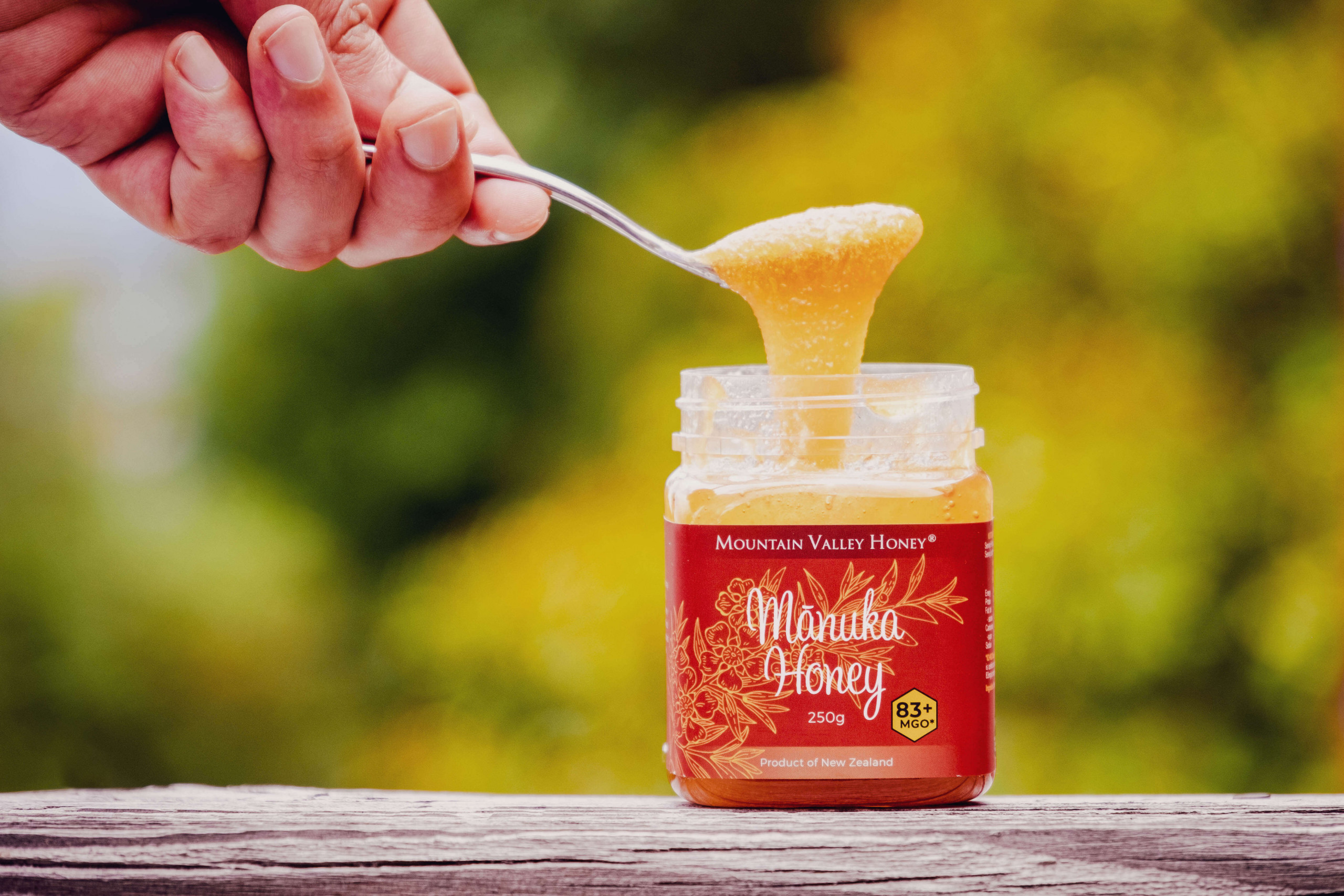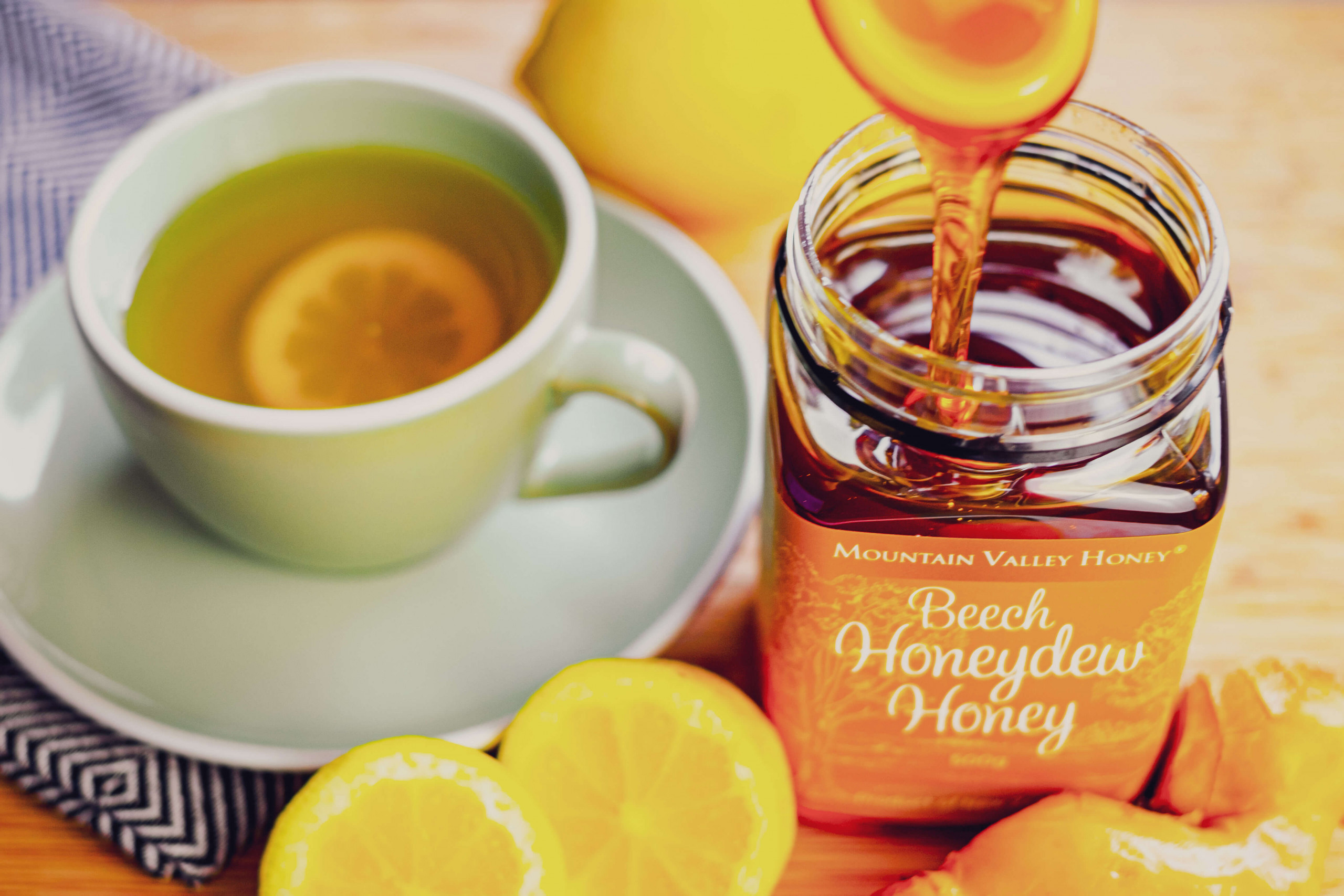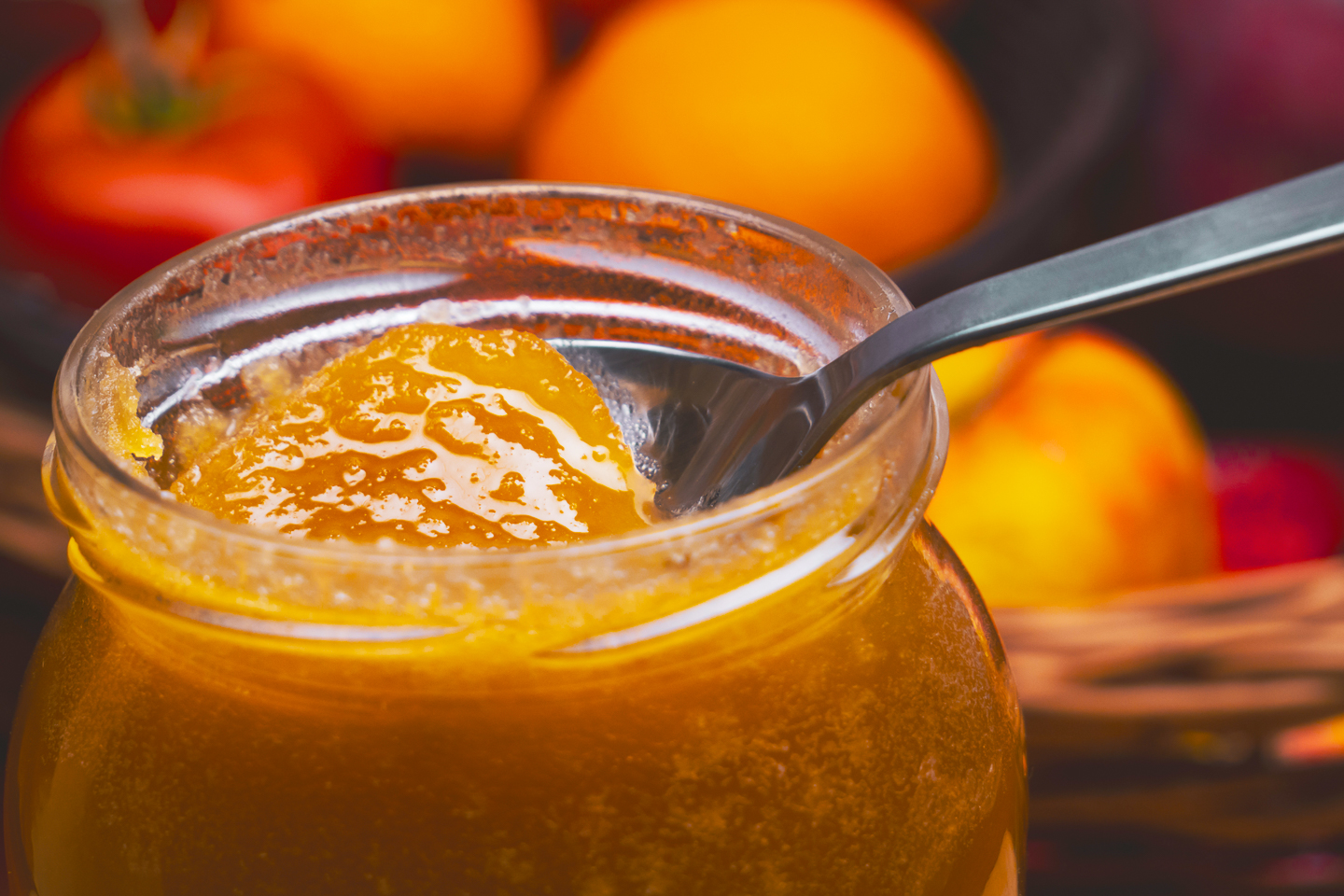UMF vs MGO in Manuka honey. What’s the difference?
Manuka honey is produced by bees from the nectar from the Manuka plant (Leptospermum scoparium). Unfortunately, the labelling of Manuka honey is rather more confusing. What are all those numbers and letters? What’s the difference between UMF vs MGO?
If you want confidence that you’re buying high-quality Manuka honey, it pays to know the wording on the label. That means coming to grips with UMF and MGO ratings. It’s also important to understand why the NZ honey industry developed these rating systems and the difference between them.
Both the UMF and MGO systems were developed to address concerns that consumers were not always buying high-quality Manuka honey. As more people begin to discover the many uses and benefits of this natural product, the price has risen rapidly. This has lead to some producers cashing in through quite misleading descriptions.
Both the NZ government and honey industry have been keen to regulate Manuka sales to protect themselves and the consumer.
While UMF and MGO ratings both show that Manuka honey is genuine, they do this in slightly different ways. In both cases, the chemical compound called methylglyoxal plays an important role.

The Role of Methylglyoxal (MGO) in Manuka Honey
All raw honey has antibacterial properties, largely due to the fact that it contains hydrogen peroxide. But Manuka honey has unique properties that are not related to the presence of peroxide. In Manuka honey, something else is going on too.
Manuka has much stronger antibacterial properties than other raw honey. In fact, research shows that Manuka is effective against many bacterial strains. Not only that, Manuka honey can help with the healing of wounds and may even act as a natural antibiotic.
You may have seen the letters MGO on your Manuka honey jar, but what is MGO in Manuka honey?
Scientists now know that much of this non-peroxide activity (NPA) is to do with a compound called methylglyoxal (MGO). Research shows that MGO has strong antibacterial properties. Plus, MGO seems to work alongside other components in Manuka to enhance the beneficial health effects of raw Manuka honey.

The MPI test for genuine Manuka honey
In 2017, the Ministry for Primary Industries (MPI) developed a two-part test for identifying Manuka honey. All Manuka Honey sold overseas must be tested by MPI approved laboratories.
First, the honey is DNA tested for the presence of Manuka pollen.
Then, the honey is tested for four chemical markers:
- 3-phenyllactic acid at 400mg/kg or higher
- 2’-methoxyacetophenone at 5mg/kg or higher
- 2-methoxybenzoic acid at 1mg/kg or higher
- 4-hydroxyphenyllactic acid at 1mg/kg or higher
However, this is just a starting point. Scientists still have a lot to learn about how this remarkable honey affects the human body. The MPI is continuing to refine and develop its testing through ongoing research.

Manuka honey can either be monofloral or multi-floral.
The purest Manuka honey is monofloral Manuka honey and comes entirely from Manuka flowers. Placing hives in areas where Manuka trees are really dense ensures the bees only collect Manuka nectar and pollen. This results in Manuka honey is that is much purer.
Mountain Valley Honey is a great example of this. Our Manuka Honey comes from the dense Manuka forests in remote locations in the Marlborough Sounds.
However, sometimes Manuka honey contains nectar gathered from other flowers as well. So long as it has high enough levels of the chemicals unique to Manuka, it can still be called Manuka Honey. However, this honey must be labelled as multi-floral Manuka.
All labelling of Manuka honey exported from New Zealand must state whether the honey is monofloral or multi-floral.

What is UMF in Manuka Honey?
In 1998 a small industry group in New Zealand established the UMF trademark. UMF stands for Unique Manuka Factor, another industry-accepted indicator of genuine Manuka honey from New Zealand. As well as testing for levels of methylglyoxal (MGO), the UMF rating takes account of additional factors.
The compound dihydroxyacetone (DHA) is one of these factors. In 2009 scientists discovered that DHA has a direct relationship to MGO. Although DHA does not have antibacterial properties itself, over time it reacts with other chemicals and turns into MGO. Therefore, measuring DHA gives an indication of the potential MGO in Manuka honey. Like good wine, Manuka honey is better if it has aged.
The UMF honey test also looks for Leptosperin — a Manuka-specific chemical. Leptosperin is stable over time and only exists in Manuka nectar. The presence of Leptosperin therefore provides absolute assurance that the sample is genuine.
Which Manuka Honey rating system is better? UMF vs MGO
Both systems (UMF and MGO) test for the unique characteristics of Manuka honey. So both are equally useful in helping customers know that their honey is genuine.
The UMF and MGO rating systems can be roughly converted using the UMF – MGO chart below:
UMF vs MGO Calculator
| MANUKA HONEY UMF RATING | MANUKA HONEY MGO RATING |
| UMF 5+ | MGO 83+ |
| UMF 10+ | MGO 263+ |
| UMF 12+ | MGO 356+ |
| UMF 15+ | MGO 514+ |
| UMF 18+ | MGO 696+ |
| UMF 20+ | MGO 829+ |

How to buy Manuka honey?
Manuka honey with the highest ratings is the most potent in terms of some important health benefits.
The very strongest grades are highly antibacterial and able to fight off dangerous infections. The Medical grade Manuka honey used in hospitals is further purified to remove any trace of contaminants. However, Medical grade Manuka is not eaten. Instead but applied topically. There isn’t conclusive evidence that eating manuka honey this potent would be any better for you than lower grade honey. That’s great news for the budget!
Middle-grade Manuka honey is most often used in skincare and for health purposes – MGO 263+ (UMF 10+) or higher.
Lower-grade Manuka honey (MGO 83+ or UMF 5+) is the perfect choice for daily consumption.
It is important to remember that research into Manuka Honey is ongoing. The specific health benefits of Manuka Honey is still the subject of debate.

Why is labelling so important?
Research into Manuka honey has revealed many unique properties, and scientists are only just starting to understand the healing benefits of this extraordinary natural product. This has led to increasing demand and high prices for quality honey.
Competition for the manuka-honey dollar has sometimes resulted in disreputable people trying to ‘cash in’ on what can be a very lucrative product. That’s why the NZ government developed strict guidelines for labelling.
Make sure to buy Manuka honey with UMF or MGO ratings
- Genuine Manuka Honey will always have an MGO or UMF rating
- Be wary of vague wording like ‘active’ or ‘bioactive’
- A jar labelled Manuka without the UMF or MGO rating may indeed contain some Manuka honey, but it may be in very small quantities
- UMF vs MGO rating systems effectively measure the same thing – that your Manuka Honey is genuine, plus the levels of antibacterial activity.
Getting to know your honey producers is the best way to ensure that your Manuka honey is genuinely what it says it is. This is particularly important if you are buying Manuka honey in New Zealand. Unfortunately, the strict labelling rules do not apply to Manuka Honey sold in New Zealand.
Always choose ethical and sustainable beekeepers who hold themselves to the same high standards, no matter where their honey is sold.
So, when it comes to finding high-quality Manuka honey, it’s not just about looking for UMF vs MGO ratings. It also pays to do your homework and find producers you can really trust.



